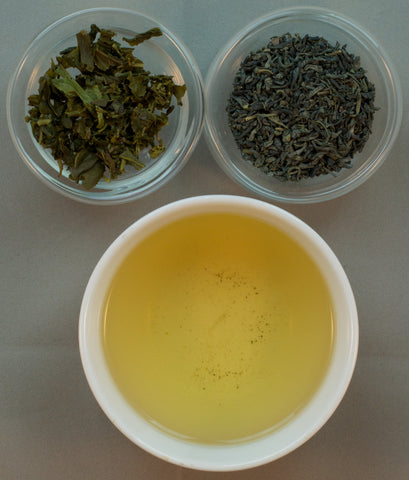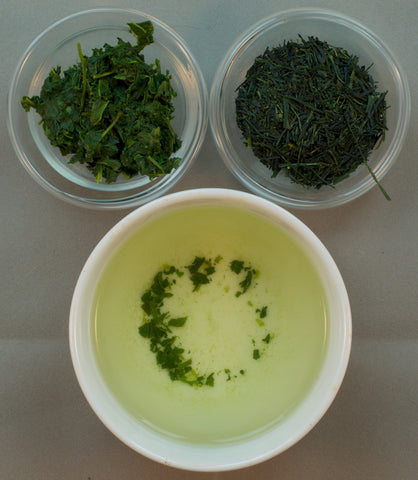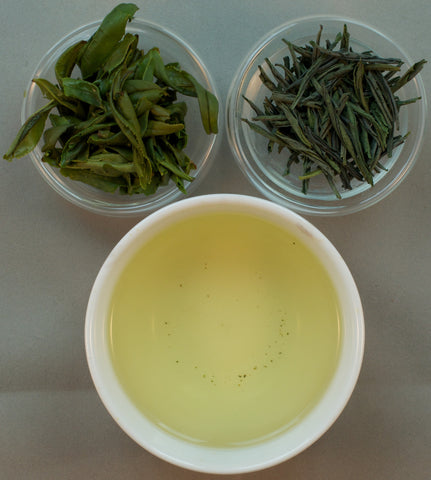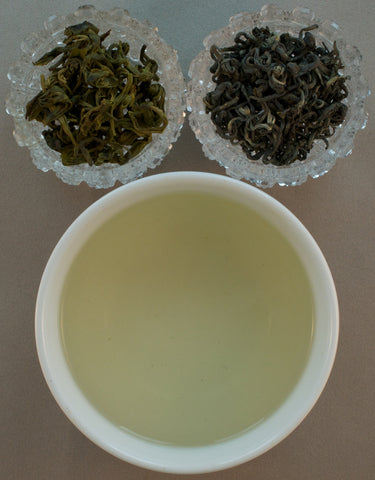Kanaya Midori is cultivated with care in Shimada, Shizuoka, at a farm with a history of over 100 years. This area is known for its well-drained soils on the picturesque Shizuoka mountain slopes. Farmer Kawashima-san crafts his own liquid fertilizer that encourages the microbes in the soil endemic to the region to provide his tea plants with the perfect amount of nourishment, resulting in a truly exceptional brew. Kanaya Midori embodies the essence of Shizuoka’s rich tea heritage.
One of the things I’m passionate about with tea, and food in general, is unique and heirloom varietals or cultivars. So I am very excited to find single cultivar senchas NOT made with the ubiquitous Yabukita cultivar. Of course there are fabulous senchas made with Yabukita but I’m all about preserving and encouraging diversity in specialty tea.
Provenance:
-
Origin: Shimada, Shizuoka, Japan
-
Grower/Teamaster: Kawashima-san
-
Elevation: 300m/450-650ft
-
Harvest Date: Spring 2023
-
Cultivar: Kanaya Midori, a cultivar renowned for its sweet aroma, draws its name from Kanaya, the area where this cultivar was developed at one of the most prominent tea research stations in Japan
-
Cultivation: Conventional
-
Plucking Standard: Machine harvested
-
Processing Notes: Fukamushi (deep) steamed
-
Nickname: . Sayama Kaori means “Aroma of Sayama”
History/Pedigree: Named for the tea research station in Kanaya where this cultivar was developed.
Brewing Suggestions1:
-
Water: 155-175˚F
-
Tea: 4g per 4oz of water (about a level 2 tsp2)
-
Infusion: 30-60 seconds until steeped out
Tasting Notes:
- a perfect balance of bitterness, astringency and sweetness. Vegetal, with subtle hints of chard, and has a pleasantly milky mouthfeel. Aroma is sweet, floral, with a hing of honeydew melon & milk.
1 Brewing suggestions are just that. Try it the suggested way then experiment. In this case I suggest first experimenting with the quantity of tea per oz of water. I use 4g (instead of my usual 2g for most teas) per 4oz of water as I like the stronger flavor of a higher tea to water ratio. For temperature, 160˚ gives a grassy, sweet, fresh balanced profile while 175˚ brings out fuller flavors with more pronounced notes. For a sweet, light delicate profile, you can try it as low as 140˚. Some tea drinkers like to use slightly hotter and longer times for each subsequent steeping.
2 Weighing your tea is always the best way to control your dosage. I provide approximate volume measures for convenience but they can be problematic due to the variance in tea leaf shape and size.



